Interview: Rashid Johnson
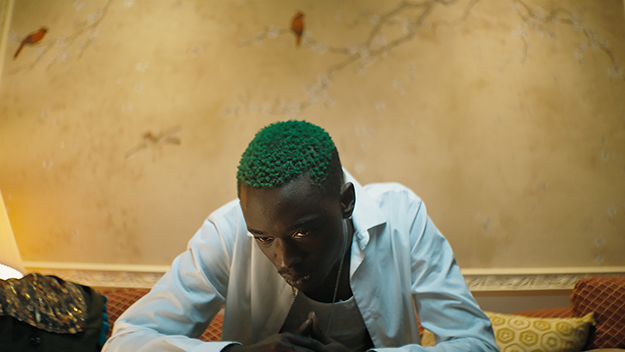
All images from Native Son (Rashid Johnson, 2019)
Richard Wright’s Native Son was published in 1940, and while it was revelatory for some, it did cause some controversy. To the white American reader, Bigger Thomas felt like a boogeyman, a byproduct of what it means to grow within and under the weight of an oppressive white supremacist system. The novel was intended to be eye-opening, a means of lending a voice and interiority to those who had been ignored and left to rot under the boot of Jim Crow—out of sight, out of mind. It was also one of the focal points of James Baldwin’s “Everybody’s Protest Novel,” from his collection Notes of a Native Son. Baldwin’s essay seeks to critique the ways texts like Native Son, “a protest novel,” does very little in the way of challenging the system and instead creates superficiality and sentimentality around systems of oppression. But as Wright himself said, “Literature is a struggle over the nature of reality.” Regardless of one’s stance, Native Son has long cemented its place in the American literary imagination, sitting high on summer reading lists.
When I first heard about the film adaptation, and having read the novel sophomore year of high school, I knew that bringing the book to the screen would be a challenge. Despite the old adage “the more things change, the more they stay the same,” the fact remains that the novel’s protagonist Bigger Thomas was specific to a certain time and place. My fears were quelled—at least a little—when I heard that playwright Suzan-Lori Parks would be writing the screenplay. The first Black woman to win a Pulitzer Prize for drama for her play Topdog/Underdog, she’s no stranger to the exploration of black masculinity on the page. I was also excited to see Rashid Johnson take on the role of narrative filmmaker. I was familiar with his work as a visual artist working in the realm of the post-black aesthetic, which has been defined on Wikipedia as “art where race and racism are prominent, but where the importance of the interaction of the two is diminished.”
Even with these two heavyweights at the helm—and with lead actor Ashton Sanders turning in an excellent performance that manifests Bigger not just through line delivery but in the way he carries his lanky frame across the screen—something about Native Son defies good or bad distinctions. I keep finding myself describing it as interesting. The changed ending means there’s no redemption arc, a choice that I came to love. Bigger Thomas is an imperfect character, not begging for empathy but simply trying to make sense of a situation that’s getting worse by the minute. But the idea of Bigger being a black weirdo/counterculture figure because he indulges in things perceived as outside of the cultural norm of blackness (or “stereotypical Negro shit” as he puts it) feels less resonant in the age of the internet when finding one’s tribe as a black punk doesn’t seem as painstaking or impossible as it would’ve been a few years back.
It’s no easy undertaking to pull Bigger Thomas off the page and onto the screen. I spoke to the director about the journey of reconceptualizing Native Son, how his arts background informed his filmmaking, and the importance of audience participation in interpreting the film.
Native Son debuted April 6 on HBO.
How did the opportunity arise to direct Native Son?
It’s a long and short story. It’s a book that I had been really interested in for a really long time. It actually started with an interview that I was doing with an art writer named Alice Thompson, about 12 years ago. She asked me what I wanted to do next. And I said I wanted to direct a contemporary telling of Richard Wright’s Native Son. She wrote that in ArtForum. Several years later, she went off to [the agency] UTA. She was there for a short period of time—sorry, I’m telling you kind of the whole story.
No, no, I want to hear the whole story.
So she was in UTA’s art division and she called me and said: “Do you still want to direct Native Son?” And I said I do. And she said, “Come in for a meeting. I have some folks here that would be interested in talking to you.” So I went in and talked to some really interesting and thoughtful folks, they asked me about finding a producer, about finding writers, etc. I threw out some ideas: I like the idea of Suzan-Lori Parks doing an adaptation, I like young producers who would give me agency and opportunity to do it the way I want it to do it, etc. And then they came back with two young guys from a production company called Bow and Arrow, who were really enthusiastic about the project and were familiar with my artwork, and they put me in a room with Suzan-Lori Parks. Suzan-Lori signed on and was really enthusiastic about the project, the Bow and Arrow guys—small turnkey production company—committed to making the film, and honestly we went from there.
Suzan-Lori Parks is a legend!
She is.
What was it like when you and she came together, and how did you conceptualize a 21st-century undertaking [of this book]?
It was really eye-opening and humbling to meet her for the first time. I had seen Topdog, it was a gift of a friend when I was in my early twenties. I remember just being blown away and thinking to myself, “This is amazing!” So she’d always been on my mind. I was always like, “If there’s someone that could do it, it would be Suzan-Lori Parks.” I sat down with her, and I was quite prepared for some resistance, for a couple of reasons: one, I’m a first-time director, I’m an artist-turned-director; and two, it’s a quite complicated story that has its own rich and difficult history. So my preparation was thorough, and I put together all of my critical concerns, and some critical and philosophical debates that I thought we were probably going to have around the idea of adapting this, and she cut me off at some point, and said, “I get all of these kind of existential and philosophical concerns that you have, but the reality is: we have to tell a story.” Her pragmatism and her understanding of what it actually takes to adapt an artwork like Native Son, something that has such a canonized history, all came to a head for me in that conversation. And her experience with it, having done an adaptation of Their Eyes Were Watching God, a Zora Neale Hurston piece—she’s navigated really interesting and complicated canonical texts in the past and in her own practice as a playwright. We then started breaking down what it would feel like and what our intentions were, and updating this story and bringing it to an audience in 2019.
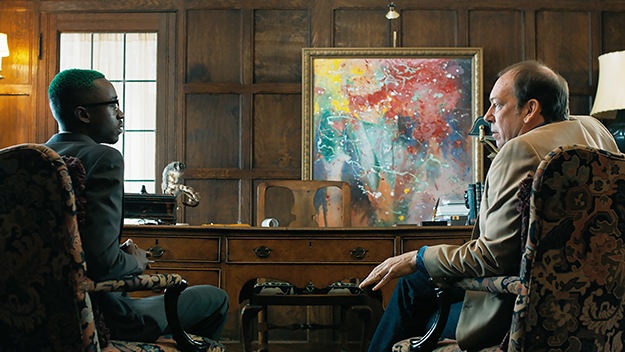
What was your relationship with Native Son like growing up and how did that influence your directorial approach?
It was an interesting relationship, in that my mother introduced the book to me with the caveat that she didn’t like Bigger Thomas. And my mother really had an influence on me as a thinker, she’s an academic who taught at a university in the African Studies Department and wrote about post-colonial feminist theory, as well as other subject matters. Receiving a book and then having that caveat, it really engaged me in an interesting loop—I was like, “What is it about this story and this particular character that she finds to be challenging?” So, like any good boy in post-Freudian exploration, it kept in my craw, I just kept thinking about it, after reading and digesting it for myself. I kept thinking about Bigger’s sphere, I kept thinking about issue around masculinity and expectation. Bigger was the first protagonist, and in particular, black protagonist, who I had ever been exposed to who explored his own psychological space in any sort of rigorous way. And he admitted his fears and flaws. I was just very taken by that, and I continue to be taken by that.
Going into this production, did you have any fears of your own about directing a feature film for the first time? And how did you work to overcome them?
Yeah, it’s an interesting question. I think in some ways I was too stupid to be scared, and in other ways, I would wake up very scared. [laughs] There was so much that I didn’t know about the process and the logistics of committing to a feature-length film and responsibility, so that sometimes scared me. And other times, because I’ve had had success in another world and I do have some experience delegating and I have worked with actors in a different kind of capacity, and I do really feel an attachment and understanding of the story and my intentions and concerns and how to tell it, that my ownership and anticipation kept me afloat in the process.
While creating this film, did you find any kind of parallels in your directing and your artistic process?
Yeah, I think that there are a few parallels. One of the things in my artistic practice—and I was talking to a friend about this yesterday—that is really consistent is that when something is not working, I’m really quick and capable of abandoning it. That was really helpful in the process of making the film as well. When you can find something that’s not working and cut off your losses, you can dig into what is working and making sure that we’re getting into the nitty-gritty and distilling the ideas and concerns in the process of making a film, just like making an artwork, and to really press in the important bits. So, yeah, there’s quite a bit of parallel. In other respects there are things that don’t correlate at all.
What are those things?
The collaborative aspect. There’s quite a bit of collaboration in an artist studio with the folks that you work with, if that’s even how your practice functions, if it’s a gallery, there’s conversation, discourse with other artists who you invite over to the studio that can help you critically diagnose what’s happening in the work and may have their work involved in the result. The agency that the cooks have in the kitchen of a film is very different. The level of expertise that someone maybe has, that you don’t have on a subject, is really humbling and interesting to navigate. It’s being aware of pulling people’s skills and talents and familiarity with the medium, and making sure that you don’t allow that to break your own confidence.
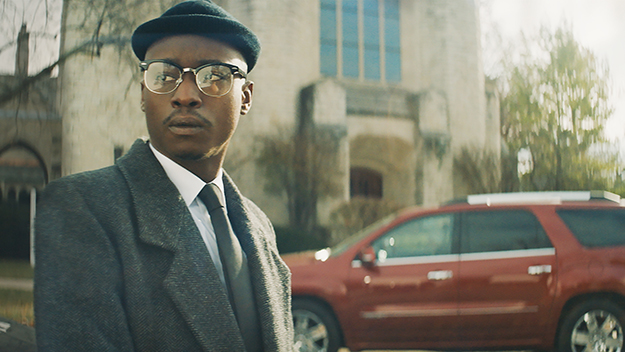
I was really interested and curious about the role of art within the movie, which I felt sort of like curating. When Bigger and his friends go to the movie theater, I believe they’re watching Sweet Sweetback…
Yeah, they are watching Sweet Sweetback.
There’s also the Henry Taylor painting Cicely and Miles Visit the Obamas and you also have an Amy Sherald. Could you talk about the role of art within the film?
Yeah, from a personal position, these are my friends, down to Melvin Van Peebles. Melvin is a real inspiration for me, and of course Sweetback is such an important film that has, for me, taken years of critically diagnosing and exploring. Even films like Watermelon Man, which was made in a studio, are really absurd and surreal and complicated. I spent time with Melvin, we’ve had conversations at his house and screenings, and conversations at Lincoln Center, so he’s just somebody that I hold near and dear. Amy Sherald is someone who I’ve known for many years and who I think is a really amazing and special artist. She’s currently showing at the gallery that I work with in New York. Including a voice like hers is interesting in this kind of context. Henry is, you know, fam—I’ve known him for a long time as well. So I’ve put their voices and positions in to inform both how to understand where the Daltons’ bandwidth is to explore cultural complexity of the black experience, as well as their opportunity to surround Bigger in some respect. And to be present with him and watch over him, and inform how and where to understand his fish-out-of-water story, is really quite important to how I saw the story coming together.
To the point of the story coming together, the ending strays from the book, and I was wondering about your decision to have Bigger killed, which can either be seen as suicide by cop or the fact that the police often just kill black people. I was wondering why you took that decision.
Yeah, we were contemporizing the story, and for good or bad, what we decided to do was to focus on the time that we’re living in today. And so many stories in the last few years around interaction between police and black suspects, or black persons that I assume they thought were guilty—are not—, of crimes, have ended with a death of that black subject by gun. So I think we saw the writing on the wall there. We see the world that we’re living in and we’re telling a story from that perspective, so it felt appropriate for that to be included as well.
As a director, how was it shooting that scene? It’s a very emotionally striking scene, and even watching it, I was taken aback by it. What was it like on set, and to have Ashton do that?
Hardest scene in the film. Hardest scene to shoot for many different reasons. We had a pretty significant mishap during the course of shooting that day with a gun and blanks, no one was deadly hurt but we had a little accident that was really jarring to everyone on set, so that sets the stage. On top of that, we were going to be shooting the last scene as the last scene. It was the end of a process, as well, so there were feelings of the project being over. And then we were going to have our protagonist killed, and we had really mixed feelings about that. Like you suggested, was it a suicide by cop? Were we ready to let Bigger go at that point? After the interactions he has with Bessie, did we see that Bigger at that point has been so grandly lost to us that, in some ways, we’re rewarded with his death, you know? Do we feel like that was the only option that he had? There was just a lot of difficult motions to navigate in the process, but we did what we thought was best as far as the storytelling was concerned.
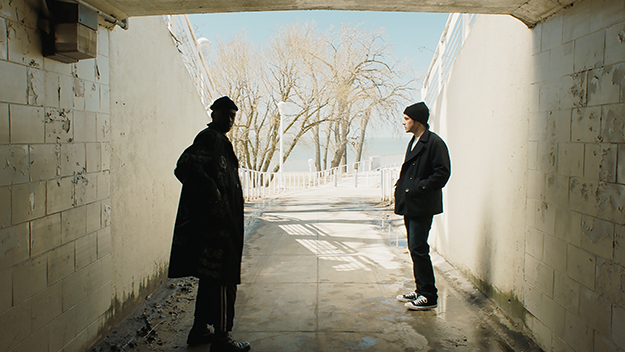
I want to talk about the choice to have Bigger be into punk music and classical music, and for there be a clear distinction between himself and his friends. Can you give me an understanding of the way his character ended up being fleshed out?
When I was thinking about Bigger, and I was thinking about the opportunity to bring a protagonist and an anti-hero like him to screen, what it really gave me an opportunity to do is to think about the diversity and the black community and experience. There were several characters in my history that in some ways resemble Bigger. And I think a lot of us have these stories. I think, in some respect, although I wasn’t a young punk necessarily, the aspect of Bigger’s unexpectedness really shadowed things from my own history, and my own self-reflection and view. In the history of film—and that’s always a hard statement to start with, right?—we don’t have a lot of black protagonists who resemble Bigger Thomas, the way that we depict them in the film. And when you get a chance, to some degree, to bring a character on screen who rarely, if ever, has been present in the psyche of the viewer, it’s an interesting opportunity. Bigger in this case is both an insider and an outsider, he is both embraced by the folks around him, and questioned and challenged by some of the other folks around him. He, in a lot of ways, is all of us. He is not an archetype that we have confronted a lot of times, and the way that he delivers his autonomy and his own vision through life, the cultural signifiers that he employs, make him special and make him interesting.
Did you at the time make the case for the way that you were going to portray the story to your production company, or the studio that you were working with, or were they pretty much on board with whatever you wanted to do?
Honestly, I was lucky in this process that I was working with people with vision, and people who were familiar with the fact that they were working with an artist. And that doesn’t mean that my ideas and concepts shouldn’t be challenged, because they should be, and questions should be asked. But to a head, everyone who was in a position to make decisions about this film, saw this vision quite clearly, and were excited to adapt these changes.
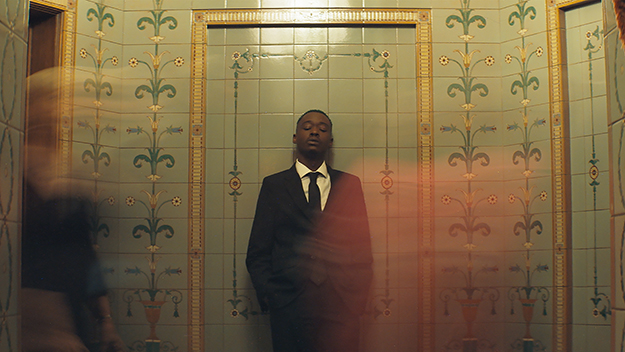
A big change to me that stood out, and also came to my mind when you were talking about your mother saying that she didn’t like Bigger—which I think is similar to how I felt when I read the novel—is that he doesn’t murder Bessie in this version. Could you talk about their relationship, and how you wanted to portray Bigger and Bessie’s relationship on screen?
Yeah, the stories are really far different. There were changes that Suzan-Lori Parks and I made during the process of bringing the story to life. One of the things that I thought was important in telling the story today and contemporizing it was ideally to make sure that some of the female characters in the story got a treatment that maybe was a little bit different than was initially included in Wright’s telling. And one of those characters that was important to revisit was Bessie. I wanted to make a character that had a different sense of agency and sophistication, and a different sense of opportunity. And to some degree she became kind of the backbone for Bigger: he really looks to her, and he obviously loves her, her commitment to him, and her commitment to how he has decided to live his life — there’s a scene where she is painting his nails on the beach. Not only is Bigger a counter-culture character, but he’s got this person in his life that helps him into this costume, as well as produces some checks-and-balances on him, you know? [Laughs] Throughout the process, she scolds him when she believes that he is behaving strangely. When she runs into him at the bar, he’s acting strange and she is taken aback, but she doesn’t cower away as if his male dominance is intimidating to her. So having said that, to put that female character in a position to be both raped and murdered by this protagonist, who is admittedly more empathetic than in Wright’s version, felt like it hijacked some of the other aspects of the story that we were really more investing in discussing, which are issues around class and race and some of the psychological spaces that we explore in Bigger. Telling this now in contemporary terms and producing that level of violence towards a woman—not to suggest that in 1939 people had a higher tolerance for this, but they may have, I wasn’t there.
Okay.
I know that I don’t. You know? And based on the fact that I don’t have a higher tolerance, and that I’m incapable of empathizing in a significant way with someone who participates in an act like that, and in imagining the other complexities of what’s present in the story after that act, kept us from including it. Because if that were to happen, for me that would be the whole story, not just a part of it. I wasn’t willing to have that act be the whole story.
What do you want people to walk away from the movie with?
One of the things that I bring with me from my other life as a fine artist, is that it’s not always going to be clear, the messaging. There’s an expectation, to some degree, that the audience has an opportunity to participate in how we interpret and how we imagine what we witnessed. Not to suggest that that’s not the case in film historically, and often times I think that it’s a less critical component of film, historically, with many exceptions. But ideally people feel like they have the opportunity to explore something that’s different, that’s engaging, that’s complicated, a story that takes them on a journey that are in some ways unexpected and fresh, and something in them is in some ways changed by that opportunity. And if anything like that happens, then I feel like we were really successful.
Tayler Montague is a freelance writer, film programmer, and native New Yorker.







